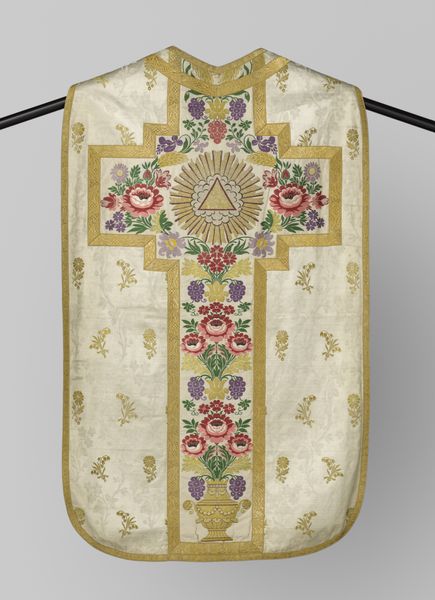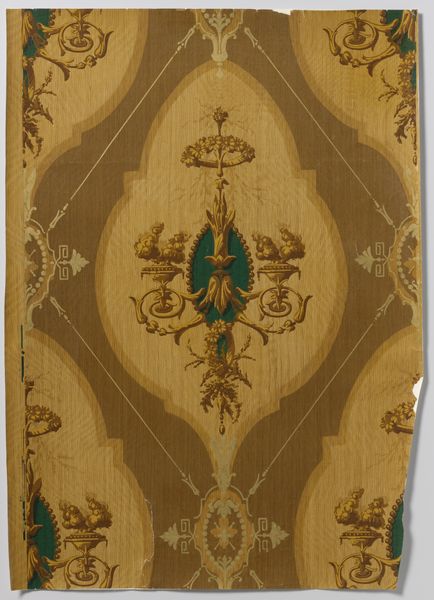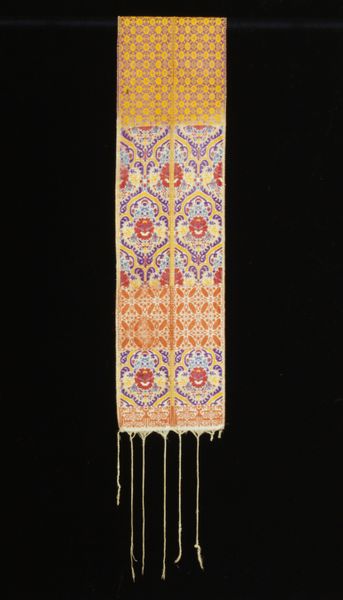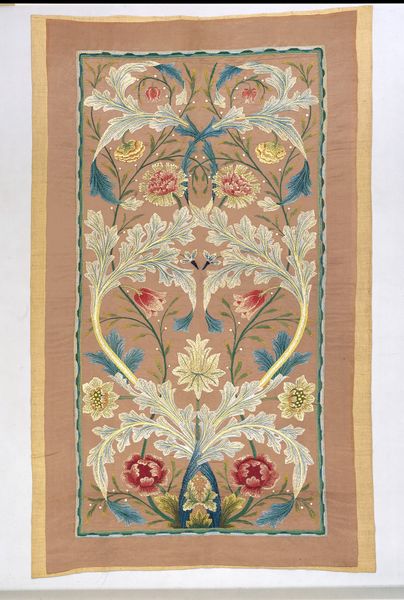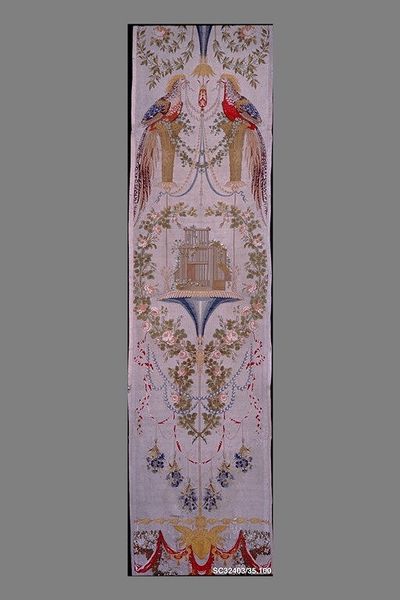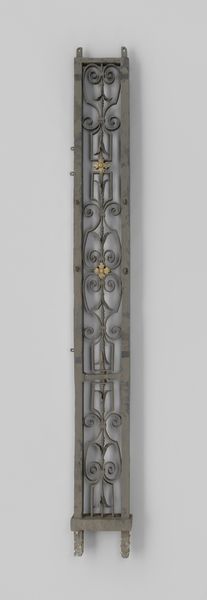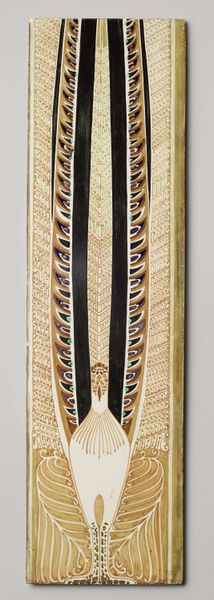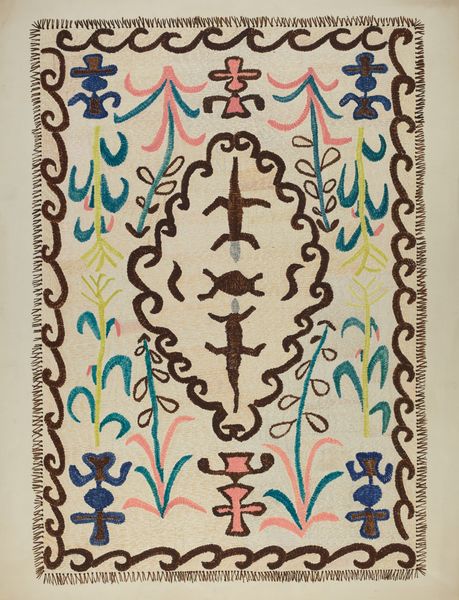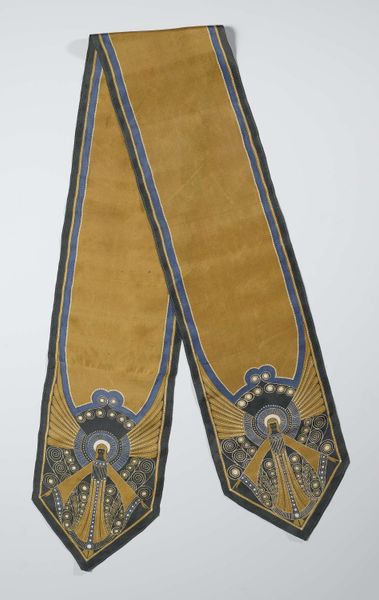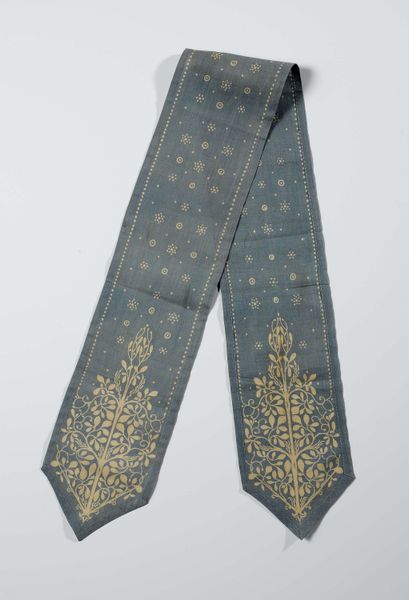
Onvoltooid fragment borduurwerk met een repeterend motief van veelkleurige zijde op naturelkleurige wollen kamgaren c. 1900 - 1910
0:00
0:00
Dimensions: length 72 cm, width 11.9 cm, width 10.3 cm
Copyright: Rijks Museum: Open Domain
This is an unfinished embroidery fragment made with colorful silk on natural wool by M.G. Winkelman-Sanders, who lived from 1871 to 1938. The repeated pattern here provides some insight into early 20th century craftwork, where an appreciation of ornamentation became increasingly important to the growing middle classes in the Netherlands. Consider how this textile fragment, with its elegant design, reflects the social and cultural values of its time. The meticulous stitches and the choice of luxurious silk threads speak to a culture of refinement and domestic artistry. Embroidery was often seen as a genteel pursuit, a way for women to demonstrate their skill and taste. Examining textile samples like this one helps us understand the social fabric of the past. We can look to historical records, letters, and craft guilds to uncover the economic, social, and institutional histories surrounding these objects, deepening our appreciation of the craft itself.
Comments
No comments
Be the first to comment and join the conversation on the ultimate creative platform.
